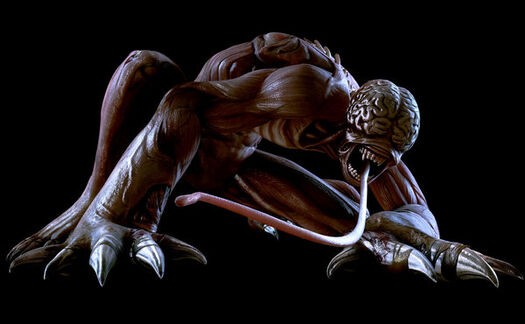I chose to look into survival horrors and the audio and visual semiotic codes they use to create immersion while playing. I decided to look into this because of the love I have always had of the genre and I have always been fascinated with the conventions used in games like Resident Evil as, through playing them as I grew, I started to like being frightened by them. The adrenaline rush I attained while playing was, and still is, extremely exciting and I wanted to investigate how and why the audio and visual signs and codes used make us immersed in the game and ultimately make us frightened by what we see and hear.
I began by looking into the history of the genre by looking at the games Sweet Home and Alone in the Dark which are generally agreed to be founders of survival horror. Through this I discovered how many of the audio and visual semiotics found in the more modern survival horror games were influenced by those mentioned above, establishing atmospheres and fear tactics found in horror movies and transferring them to the video game experience. Puzzle-solving, item collection and fight-or-flee combat conventions were also heavily taken from the earlier titles of the genre.
Following this I focused my research more on the semiotics of survival horrors and started to look first glance at what makes a game scary. I touched on the ideas of fear of the unknown, the use of cutting off and hinting with audio and visual stimuli and the sudden scare, all tools used in the survival horror games I looked into. In addition to this, I experienced first-hand a survival horror situation when I traveled to forest in the dead of night. This allowed me to apply some of the theories I had come across so far in my research to reality, I was experiencing the fear tactics used in the survival horror genre. It was interesting to see how a variety of signs and signifiers built into a scary experience, how flashes of light and what seemed like figures through the trees sparked my imagination and heightened the fear levels.
It was here that I started to feel a bit off course and decided to define exactly what I was looking into. I looked into the theory of semiotics and how texts create meaning through the use of signs, building into semiotic codes. Survival horrors use audio and visual codes to bring the game world to life and to frighten the player. For example, a disheartening, suspense fuelling soundtrack heightens levels of tension and foreboding; blood and gore signify could death and murder, bringing about fear to the player and atmosphere to the environment. My aim for this project was to look into how these codes are used via audio and visual channels to create a frightening, and therefore, immersive experience. I believe I could have touched much more on the term “immersion” when related to video games, but in this context I believe immersion is simply achieved when the player is successfully put on-edge and frightened by the gaming experience, proving that they are engrossed in the game.
I then started to look at more academic sources of information and I became very interested with the theories of spatial navigation, cinematography and game audio, learning a lot along the way. I was able to look into the use of aesthetic codes via the use lighting and the subverting of the normal mise-en-scene of an area into a terrifying version of itself. Also I looked into how game audio could be used effectively and how technical codes were used in the form of game level structure to maintain tension and exhilaration throughout gameplay by not meandering on side-quests and unimportant areas of narrative.
I have enjoyed conducting this investigation as I feel that I have learnt so much more about the survival horror genre and its semiotic codes than when I first started. The use of horror film conventions and real-life psychology in these games has taught me just how and why certain audio and visual elements make me feel like I do when playing a survival horror which we allow me to apple them to the future games I play and hopefully create. However it has also opened my eyes to how the survival horror genre seems to be dying. Players are wising up to the ways in which these games are constructed, no longer finding the newer survival horror titles frightening (namely Dead Space). The use of repetition in the genre has caused it to have to branch into new areas, leaving the old survival horror formulas behind in the last two generations, e.g. Resident Evil 4’s much more action orientated approach. Hybridised games mixing survival horror semiotics and other genres are emerging, most notably Left 4 Dead. The question is whether or not game developers will be able to save this brilliant genre from extinction with new and fresh ideas, unlike the ones I have found in this investigation. To create a brand new and truly scary game experience innovation is key.
Word Count: 858
For bibliography and sources, see bottom of page.



















